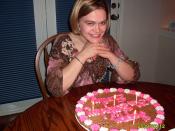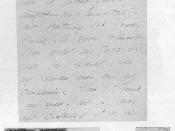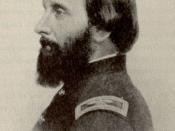* Emily Elizabeth Dickinson (1830-1886), American poet, known as "the New England mystic"; innovator in the use of poetic language, forms, and rhythms; author of 1,775 poems, most published posthumously.
* Born December 10, 1830 in Amherst, MA; her grandfather was founder of Amherst College; her father was treasurer of the college and U.S. Congressman; both of her parents were cold, distant, severe people.
* Attended Amherst Academy, spent one year (1847-1848) at Mount Holyoke Female Seminary in South Hadley; she resisted Christian indoctrination and returned to the family home in Amherst.
* 1855, visits to Washington and Philadelphia while her father was in Congress; met and was befriended by Rev. Charles Wadsworth, an orthodox Calvinist preacher
* Correspondence with Wadsworth; also corresponded with Samuel Bowles, editor of the Springfield Republican; Bowles criticized her poetry but, eventually, a few of her poems were published in his paper.
* Frustrated love for a man she called "Master" (maybe Bowles or Wadsworth) in drafts of her letters.
* 1862, began correspondence with Thomas Wentworth Higginson who showed interest in her poetry but advised her not to publish it; after that she resisted any attempts at the publication of her work.
* She wrote little until the early 1860's; then wrote prolifically for the rest of her life (1,775 poems in all); the years of the Civil War were her most productive period (800 poems); collected her poems in hand-sewn booklets; experimented with language, syntax, and rhythm (predominance of quatrains in iambic trimeter); conciseness of language.
* Influence of the Metaphysical poets of seventeenth-century England and also writers of the Romantic period like Ralph Waldo Emerson and Emily her work shows Romantic ideals and desires mixed with struggles of religious belief and influence of New England Puritanism.
* During part of 1864 and...


